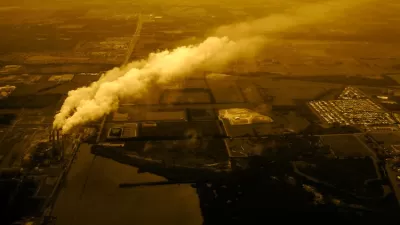On April 7, the illinois Industrial Carbon Capture and Storage commenced operations, taking carbon that corn sequestered from the atmosphere and storing it safely almost a mile and a half underground in a sandstone formation.
, according to a thorough description by the Melbourne-based Global CCS Institute.
Computer models that seek to chart our planet’s energy and climate future have leaned heavily on BECCS as a way to power future transportation and electricity systems while nonetheless keeping the planet’s warming below the dangerous level of 2 degrees Celsius.
“This is the first large scale project in the world on biofuels, and it takes us down the road towards negative emissions, which is the exciting part,” said Jeff Erikson, director of the Global CCS Institute
ICCS is operated by the Archer Daniels Midland (ADM) Company and managed by the National Energy Technology Laboratory (NETL) under agreement with ADM, the University of Illinois through the Illinois State Geological Survey, Schlumberger Carbon Services, and Richland Community College.
Not one but two projects, both funded by U.S. Department of Energy
ICCS follows the earlier Illinois Basin Decatur Project (IBDP) led by the Midwest Geological Sequestration Consortium at the University of Illinois, funded largely by the U.S. Department of Energy in 2007. Carbon injection operations into the Mount Simon Sandstone begin in November 2011 and cease three years later. In January 2015, the U.S. Department of Energy announces the IBDP had successfully captured and stored approximately one million tonnes of CO2, according to the Global CCS Institute's timeline on ICCS.
ICCS receives its first DOE funding in June 2010, begins construction in August 2011, and opens on April 7.
Petra Nova plant ribbon-cutting
The plant's opening was overshadowed a week later by the ribbon-cutting, with U.S. Secretary of Energy Rick Perry participating, marking the opening of the Petra Nova project, the world’s largest post-combustion carbon capture project, at a coal-burning power plant at the W. A. Parish Electric Generating Station in Thompsons, Texas. The project, which commenced operations in January, showcases clean coal technology utilizing enhanced oil recovery.
While the Illinois and Texas plants utilize different applications of both capturing and storing carbon, they share what may be the biggest challenge facing all CCS operations: Without a price on carbon, these operations may not be economically viable. "Not every coal power plant sits near an old oil field," remarks Mooney in his piece on the Petra Nova project ribbon-cutting on April 13.
FULL STORY: The quest to capture and store carbon – and slow climate change — just reached a new milestone

Study: Maui’s Plan to Convert Vacation Rentals to Long-Term Housing Could Cause Nearly $1 Billion Economic Loss
The plan would reduce visitor accommodation by 25,% resulting in 1,900 jobs lost.

Alabama: Trump Terminates Settlements for Black Communities Harmed By Raw Sewage
Trump deemed the landmark civil rights agreement “illegal DEI and environmental justice policy.”

Why Should We Subsidize Public Transportation?
Many public transit agencies face financial stress due to rising costs, declining fare revenue, and declining subsidies. Transit advocates must provide a strong business case for increasing public transit funding.

Paris Bike Boom Leads to Steep Drop in Air Pollution
The French city’s air quality has improved dramatically in the past 20 years, coinciding with a growth in cycling.

Why Housing Costs More to Build in California Than in Texas
Hard costs like labor and materials combined with ‘soft’ costs such as permitting make building in the San Francisco Bay Area almost three times as costly as in Texas cities.

San Diego County Sees a Rise in Urban Coyotes
San Diego County experiences a rise in urban coyotes, as sightings become prevalent throughout its urban neighbourhoods and surrounding areas.
Urban Design for Planners 1: Software Tools
This six-course series explores essential urban design concepts using open source software and equips planners with the tools they need to participate fully in the urban design process.
Planning for Universal Design
Learn the tools for implementing Universal Design in planning regulations.
Smith Gee Studio
Alamo Area Metropolitan Planning Organization
City of Santa Clarita
Institute for Housing and Urban Development Studies (IHS)
City of Grandview
Harvard GSD Executive Education
Toledo-Lucas County Plan Commissions
Salt Lake City
NYU Wagner Graduate School of Public Service




























